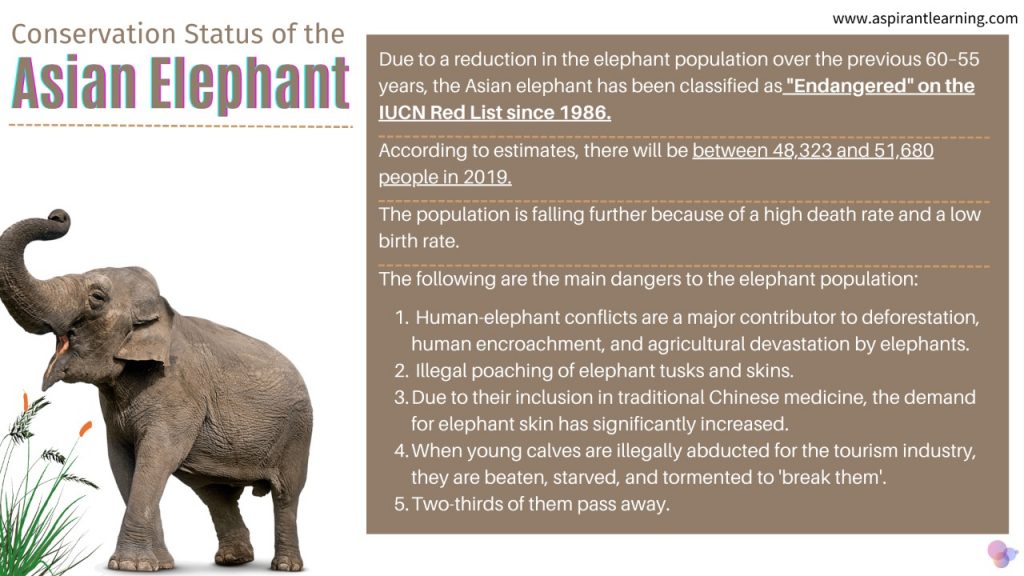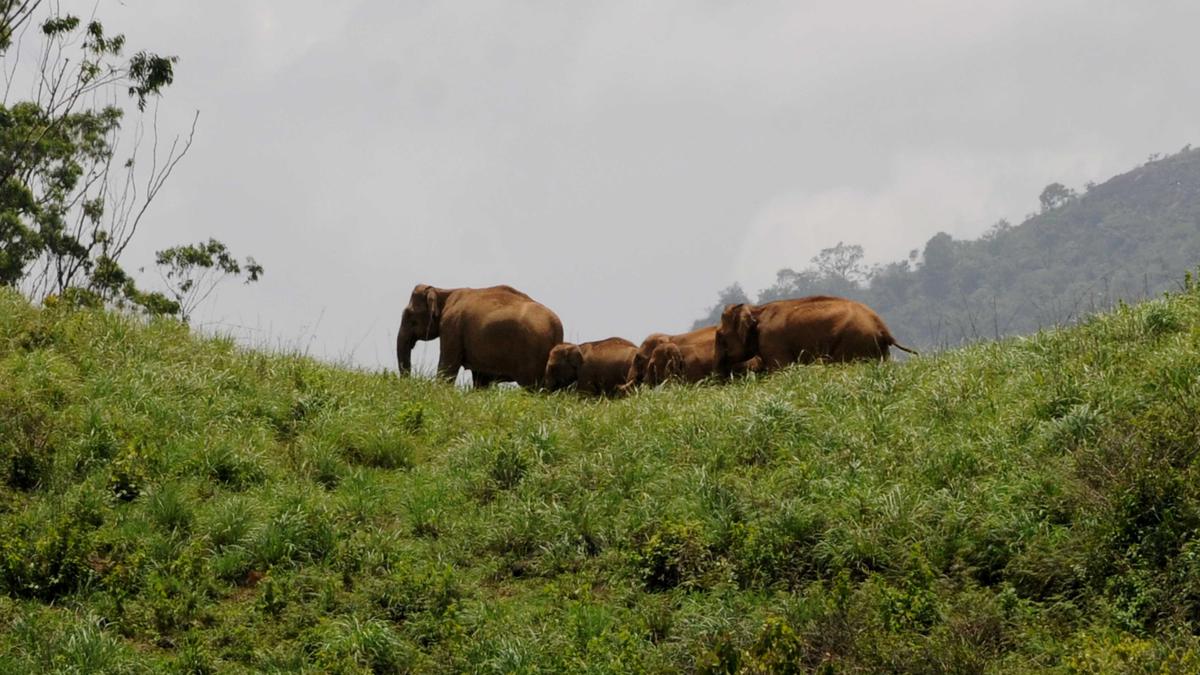News Highlight
The endangered Asian elephant has lost most of its optimal habitat in the Nilgiri Reserve: Study.
Key Takeaway
- Elephants winding their way up the rocky green hills in the Nilgiri Biosphere Reserve (NBR) make for pretty photographs.
- But a recent article says the endangered Asian Elephant has lost most of its “optimal” habitat: flat terrain easily negotiable.
- A paper, Fencing Can Alter Gene Flow of Asian Elephant Populations within Protected Areas, was published in the international, peer-reviewed, open-access journal Conservation by a multi-disciplinary team of ecologists, conservationists and scientists.
Asian Elephant
- About
- It is found throughout the Indian subcontinent and Southeast Asia, ranging from Borneo in the east to Nepal in the north and Sumatra in the south.
- The largest living terrestrial animal in Asia is the Asian elephant.
- Due to a population drop of at least 50% over the previous three generations of elephants, or roughly 60-75 years.
- The Asian elephant has been categorised as Endangered on the IUCN Red List since 1986.
- In addition, its main threats are habitat loss, degradation, fragmentation, and poaching.
- CITES (the Convention on International Trade in Endangered Species of Wild) Appendix I lists the Asian elephant.
Project Elephant
- Firstly, it is a government-sponsored programme that was started in February 1992.
- Goal: To offer important elephant-bearing States national financial and technical help to protect elephants, their habitats, and migration routes.
- In addition, it aims to solve the problems of human-elephant conflict and domestic elephant care.
- 16 States / UTs, including Andhra Pradesh, Arunachal Pradesh, Assam, Jharkhand, Kerala, Meghalaya, Nagaland, Orissa, Tamil Nadu, Uttaranchal, Uttar Pradesh, and West Bengal, are participating in the project.
- The project aims to ensure elephant populations’ long-term survival in their native habitats by safeguarding elephants, their habitats, and migration corridors.
- Other objectives include promoting research into the ecology and management of elephants, raising locals’ understanding of conservation, and improving veterinary treatment for elephants in captivity.
- Since January 2004, Project Elephant has formally carried out the CITES’ MIKE (Monitoring of Illegal Killing of Elephants) programme in 10 ERs (Elephant Reserves).
- Furthermore, CITES’ COP resolution mandates it.

The Nilgiri Biosphere Reserve
- The Nilgiri Biosphere Reserve was India’s first biosphere reserve when it was created in 1986.
- It is located in the Western Ghats and contains two of India’s ten biogeographical regions.
- Furthermore, this area is home to various ecosystems and animals.
- As a result, it was an obvious option for the country’s top biosphere reserve.
- The Nilgiri Biosphere Reserve was established mainly to fulfil the following objectives:
- To conserve in situ genetic diversity of species.
- To restore degraded ecosystems to their natural conditions.
- To provide baseline data for ecological and environmental research and education.
- To function as an alternate model for sustainable development.
Geography
- Firstly, the Nilgiri Biosphere Reserve spans 5,520 square kilometres.
- Parts of Tamil Nadu, Kerala, and Karnataka are included in the Nilgiri Biosphere Reserve.
- The reserve receives 500 mm to 7000 mm of rainfall annually, and its average annual temperature ranges from 0°C in the winter to 41°C in the summer.
- In addition, the Malabar rainforest is the biogeographic region that includes the Nilgiri Biosphere Reserve.
- This reserve contains several protected areas, including the Mudumalai Wildlife Sanctuary, Wayanad Wildlife Sanctuary, Bandipur National Park, Nagarhole National Park, Mukurthi National Park, and Silent Valley.
Conservation and management of the Nilgiri Biosphere Reserve
- Conservation and management of the Nilgiri Biosphere Reserve depends on the coordination between government agencies and the local people.
- For effective management, the Nilgiri Biosphere Reserve has been zonalised as follows:
- core zone (1240 sq. km)
- buffer zone (4280 sq. km)
- The buffer zone is separated into manipulation zones, such as forestry, tourist, and recreation zones.
- All three states that the Nilgiri Biosphere Reserve stretches into Tamilnadu, Karnataka, and Kerala have these zones.
- Additionally. only in the manipulation zone can you see most of the plantations.
- The Nilgiri Biosphere Reserve contains some national parks and animal sanctuaries because it is one of the hotspots for biodiversity.
- These national parks and wildlife sanctuaries’ primary goal is to conserve animals.
- Furthermore, the government has classified some of these sites as Project Tiger and Project Elephant regions.
Pic Courtesy: The Hindu
Content Source: The Hindu



